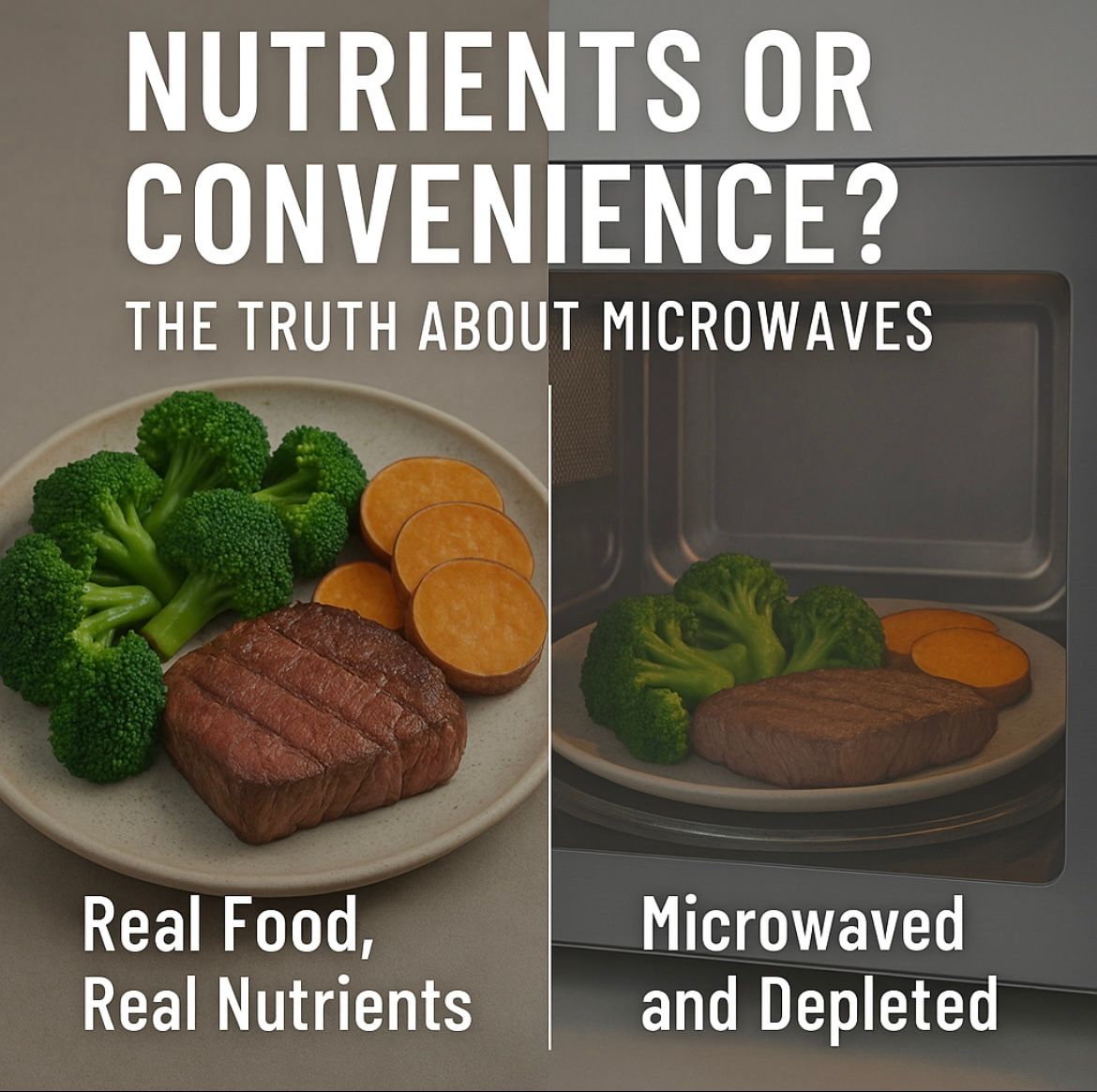Microwaved Nutrition: What You’re Really Losing When You Heat Your Food This Way
How Microwaves Impact the Nutritional Value of Meat, Vegetables, and Everyday Meals
Microwaved Nutrition: What You’re Really Losing When You Heat Your Food This Way
How Microwaves Impact the Nutritional Value of Meat, Vegetables, and Everyday Meals
We all love convenience.
But at what cost?
You toss last night’s leftovers into the microwave, hit a few buttons, and 90 seconds later you’ve got a hot meal. But have you ever stopped to ask—what happens to the nutrients during that quick zap?
I did.
And once I saw the data, I started looking at my microwave very differently.
What the Science Says About Microwaves and Nutrient Loss
Microwaves heat food by causing water molecules to vibrate rapidly, which produces heat. That’s why microwave cooking is fast—but it’s also rough on certain nutrients.
Here’s what studies have shown:
- Broccoli loses up to 97% of its antioxidants when microwaved with water. (Journal of the Science of Food and Agriculture, 2003)
- Garlic loses its cancer-fighting allicin in just 60 seconds of microwaving.
- Meat proteins become structurally altered under microwave radiation, reducing their digestibility and amino acid availability.
- Vitamin B12, critical for nerve and brain health, can be destroyed by microwave heating in meat.
- Breast milk, when microwaved, showed a dramatic reduction in lysozyme activity and vitamin C—both vital for infant immunity.
Not All Heating Is Equal
Let’s be clear—all cooking methods reduce some nutrients.
But microwaving tends to be one of the most damaging, especially for delicate compounds like:
- Sulforaphane (in cruciferous veggies)
- Vitamin C
- B vitamins
- Polyphenols and antioxidants
- Amino acids in meat
Methods like steaming, light sautéing, or slow roasting tend to preserve nutrients far better than microwaving. Even reheating in a pan or oven takes a little longer but keeps the food closer to its original state.
Why This Matters for Functional Healing
In functional healing, we talk a lot about nutrient density. Every bite should work for you, not against you.
When you’re fighting chronic fatigue, gut issues, or inflammation, your body is already in a deficit. The last thing you need is to unknowingly strip nutrients from the healing foods you’re eating.
This isn’t about being perfect.
It’s about being intentional with how we prepare food—because it truly makes a difference.
What Most People Get Wrong
Most people assume if it’s organic or grass-fed, it’s automatically good enough—no matter how it’s cooked.
But here’s the truth:
You can take the best quality food… and still sabotage it with the wrong prep method.
Microwaving isn’t just neutral—it can actively degrade the compounds your body needs to heal, regenerate, and stay resilient.
What I Recommend Instead
If you’re serious about healing at the root, here are simple swaps:
- Reheat food on the stovetop or in a toaster oven
- Use glass or stainless steel, not plastic
- Steam veggies instead of nuking them
- If you must use the microwave occasionally, avoid water and use lower power for less time
- Prep meals in batches so you can warm them properly without rushing
And if you’re dealing with chronic symptoms and feeling stuck, there’s a reason your body isn’t responding like it should. This is one small piece of the puzzle, but it matters.
Book a Free 15-Minute Call
If you’re ready to dig deeper and take back control of your health, I invite you to book a free 15-minute call.
www.executivefunctionalhealing.com
We’ll talk about what’s going on beneath the surface and what your next steps might be.

